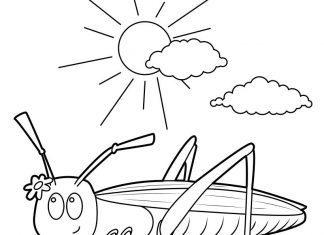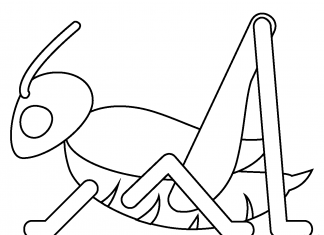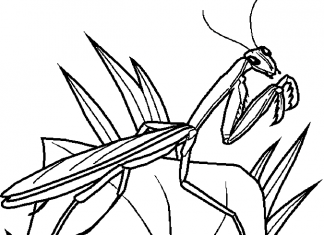Crickets are insects of the order Protozoa (Orthoptera) belonging to the cricket family (Gryllidae). They are characterized by their ability to make distinctive sounds by trumpeting or flapping their wings or legs. Singing is mainly an activity of males, serving to attract a mate and mark territory. Crickets are active mainly at night, and their sounds are often associated with summer evenings. They are an important link in the food chain, playing the role of food for other animals.
Cricket Coloring Pages
information
Physical characteristics:
- Crickets are relatively small insects with a body length usually no more than a few centimeters.
- Their body is laterally flattened and covered with tough skin.
- They have long, slender feelers and long, thread-like feelers at the end of the body.
- The rear pair of legs is adapted for jumping, which is a characteristic feature of prostoscopic wings.
Mode of life:
- Crickets are active mainly at night and in the evening, so you can hear their distinctive cicadas during summer evenings.
- The distinctive chirps of crickets are produced by males with the help of stridulatory organs (special structures on the wings), which produce sounds by trumpeting or crackling to attract females.
- Their songs can have a variety of sounds that are used to communicate with each other, identify territory or attract a mate.
Crickets vs. symbolism:
- Crickets have been used in various cultures to symbolize good luck, joy or divination. In some beliefs, they were supposed to bring good fortune.
- In literature and art, cricket can have symbolic meanings, such as as a sound of nature that reminds us of the passing of time, or as a symbol of modesty and humility.
Food and ecosystem:
- Crickets are mainly herbivorous, feeding mainly on plants and detritus.
- They are an important link in the food chain, providing food for birds, amphibians, other insects and animals.
Species diversity:
- There are many species of crickets, and their appearance, behavior and sounds can vary depending on the species and the environment in which they occur.
Crickets in Culture:
- The sound of crickets is often associated with summer evenings and nature, so it can inspire creators of literature, music or visual art.
trivia
- Fast singer: Crickets are capable of making very high-frequency sounds. Some species are capable of making as many as 1,000 sounds per second.
- Sound competition: In some regions, especially in hot countries, competition between male crickets is so intense that they have to adjust their sound rhythms to avoid overlapping. As a result, each has its own "nicha" sound.
- Singing as a temperature indicator: The frequency of the sound produced by crickets can depend on the ambient temperature. The warmer it is, the faster the crickets sing. Thus, it is possible to roughly estimate the temperature based on their singing.
- Biblical Symbolism: In the Bible, crickets were used symbolically in parables. For example, Proverbs 30:24-28 mentions four wise things on earth, and one of them is "the little peoples, who are however wise: though they have no guide, they seek food for themselves in the summer."
- Food in some countries: In some cultures, crickets and other insects are considered a delicacy. In some countries, they are consumed as a source of protein and nutritional value.
- Insect Prevention: In some areas, people use the sounds of crickets as a natural insect repellent. The sounds are audible to humans, but may not be comfortable to insects, which can help protect plants.
- Crickets in space: In 1973, as part of the Skylab 3 mission, scientists conducted an experiment in which they carried crickets aboard a spacecraft. Under weightless conditions, they tested how the insects would cope with making sounds.
- Singing at elevated sea level: In areas with elevated sea levels, such as the Andes or the Himalayas, crickets can produce higher-frequency sounds because atmospheric pressure is reduced there.
- Discovery of new species: Although many species of crickets are known, new ones are being discovered all the time. In 2014, scientists discovered a new species of cricket in the Grand Canyon of Colorado.
- Strong wings: Although crickets usually can't fly like grasshoppers or guinea pigs, their wings are relatively strong and allow them to leap long distances.








